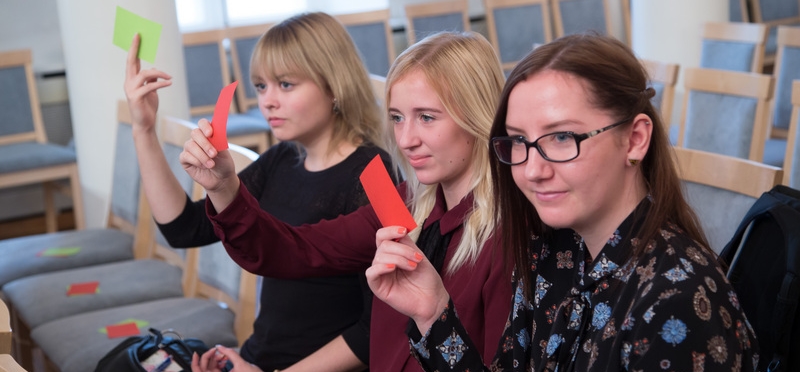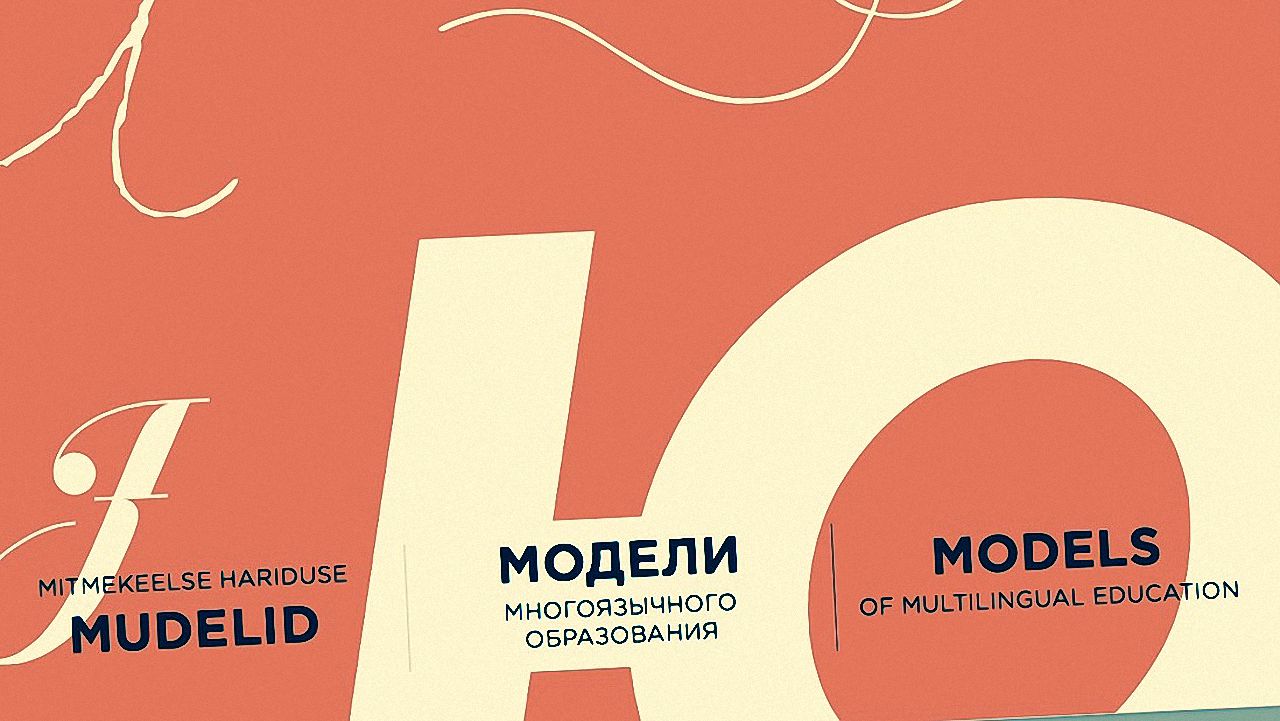- Home
- Study book
- Week 1: Introduction to multilingualism and plurilingualism
- Week 2: Understanding bilingualism
- Week 3: Multilingualism in state and society, and the role of communities
- Week 4: Early Childhood Multilingualism
- Week 5: Multilingual school
- Week 6: Multilingual higher education
- Week 7: Interculturalism and intercultural communication
- Course team

MOOC: Multilingual Education
Week 2 Understanding bilingualism
The readings, videos and activities below are designed to provide opportunities for deepening your knowledge about the topics covered in Week 2 “Understanding bilingualism” of the MOOC (e-Course). It is aimed to be used in academic seminars, providing extra materials, some suggestions for activities, etc.
In order to become familiar with the basics of the topic, it is recommended that you go through the self-study e-Course as follows:
- To become generally acquainted with the topic and concepts related to bilingualism, study the MOOC materials of Week 2 part 1 here: https://sisu.ut.ee/multilingual/book/1-title
- Week 2 part 2 here: https://sisu.ut.ee/multilingual/book/2-different-kinds-bilingualism
- Week 2 part 3 here: https://sisu.ut.ee/multilingual/book/23-breaking-myths-about-bilingualism
- Complete the Week 2 quiz here: https://sisu.ut.ee/multilingual/multilingual-1
Extra materials for academic seminars or for individual learners who wish to deepen their understanding of the topic:
Multilingualism in Europe. A Study guide. A Resource Book for Students.
Dabašinskienė, Ineta and Laura Čubajevaitė. 2013. Multilingualism in Europe. Kaunas: Vytautas Magnus University. https://vb.vdu.lt/object/elaba:4803887/4803887.pdf
Publication of the study guide provides a variety of materials for learning about multilingualism and several related topics with it, which could be used for either academic seminars or home readings according to the course focus.
The topics include the following:
- Multilingualism, Globalization and Network Society
- Multilingualism and Social Perspectives In European History
- English As A Lingua Franca (ELF)
- Signs In The City: Linguistic Landscape As A New Approach To Multilingualism
- Multilingualism and New Economy
- Multilingualism and Inequality
- Language and Identity: Integration and/or Discrimination In Various Situations
- EU Language Policies in Education, Education Of Ethnic Minorities In Europe
- Advantages and Disadvantages Of Multilingualism: Psycholinguistic and Sociolinguistic Perspectives
The materials were supported by the European Social Fund (ESF) and the Government of the Republic of Lithuania, project title: “Preparation and implementation of the joint degree international master programme in ‘Sociolinguistics and Multilingualism’”, and are freely available to download.
Does bilingualism influence cognitive aging? – This study says ‘yes’! Read and find the proof.
This Open Access article presents empirical evidence on how bilingualism has impact on people’s cognitive abilities, especially when aging.
The study of 853 participants shows that bilinguals performed significantly better than predicted from their baseline cognitive abilities, with strongest effects on general intelligence and reading.
Bak, T. H., Nissan, J. J., Allerhand, M. M. and Deary, I. J. (2014), Does bilingualism influence cognitive aging?. Ann Neurol., 75: 959-963. doi:10.1002/ana.24158
https://onlinelibrary.wiley.com/action/showCitFormats?doi=10.1002%2Fana.24158
Step 1.
Read the article and discuss:
- What is the authors’ notion of bilingualism?
- How was the cognitive ability measured? What are the limitations of such measurements?
- Do you think that children and adolescents find this proof relevant to their own experience for increasing motivation of learning languages? Why/Why not?
Step 2.
The authors de Bruin, Treccani and Della Sala (2014) of the article “Cognitive Advantage in Bilingualism: An Example of Publication Bias?” suggest that the popular belief of advantages of bilingualism may be hyped due to to the publication bias.
- Read the abstract and reflect, whether that might be the case and the prevalent notion of bilingualism affecting cognitive ability should therefore be contradicted or even falsified?
De Bruin, A., Treccani, B. & Della Sala, S. Cognitive Advantage in Bilingualism: An Example of Publication Bias? Psychological Science, Vol 26, issue 1, Sage Journals, https://doi.org/10.1177/0956797614557866
Abstract also available here below:
It is a widely held belief that bilinguals have an advantage over monolinguals in executive-control tasks, but is this what all studies actually demonstrate? The idea of a bilingual advantage may result from a publication bias favoring studies with positive results over studies with null or negative effects.
To test this hypothesis, we looked at conference abstracts from 1999 to 2012 on the topic of bilingualism and executive control. We then determined which of the studies they reported were subsequently published. Studies with results fully supporting the bilingual-advantage theory were most likely to be published, followed by studies with mixed results. Studies challenging the bilingual advantage were published the least. This discrepancy was not due to differences in sample size, tests used, or statistical power. A test for funnel-plot asymmetry provided further evidence for the existence of a publication bias.
Bilingualism Accentuates Children’s Conversational Understanding
Siegal M, Surian L, Matsuo A, Geraci A, Iozzi L, et al. (2010) Bilingualism Accentuates Children’s Conversational Understanding. PLOS ONE 5(2): e9004. https://doi.org/10.1371/journal.pone.0009004
https://journals.plos.org/plosone/article?id=10.1371/journal.pone.0009004
This Open Access article presents an investigation of bilingualism and its influences on children’s conversational understanding. The study involved children aged 3–6 years exposed to one or more of four major languages: English, German, Italian, and Japanese. The children’s ability to identify responses to questions as violations of conversational maxims (to be informative and avoid redundancy, to speak the truth, be relevant, and be polite) were researched using experiments.
Suggestions for the contact seminar:
- What was the authors’ understanding of bilingualism?
- How was the effect of bilingualism on children’s conversational understanding measured?
- What was the proof of child’s conversational understanding being improved?
- What could be the conclusions and implications for teacher education driven from this research?
Learning from the Latvian Experience of Bilingual Education 
On 19–21 November, a group of researchers from the University of Tartu (Professor of Estonian as a Foreign Language Birute Klaas-Lang, Associate Professor of Speech Therapy Marika Padrik, Senior Research Fellow in Estonian as a Foreign Language Mare Kitsnik, Lecturer in Pedagogy and Psychology Ülle Säälik, and Assistant Lecturer in English Olga Orehhova), who are involved in the RITA-RÄNNE research project “Migration dependency and integration challenges for Estonia, employers, communities and educational system” (https://ranne.ut.ee) visited Latvia to learn about the Latvian experience of bilingual and multilingual education and Latvian language teaching.
Olga Orehhova (2019). Learning from the Latvian Experience of Bilingual Education. Mitmekeelne haridus nr 4, p 22-24, https://www.narva.ut.ee/sites/default/files/nc/mitm_04_web_2.pdf
The article could also be read here: https://issuu.com/053854/docs/mitm_haridus_web_done.compressed__1/22
Language portraits
An interesting way of exploring one’s linguistic and cultural background as to the functions a person attributes to the different languages in her/his life is connecting the various languages used by a person to different parts of a human body based on the role that these languages have and/or the purposes for which they are used. A model of person’s language portrait, meant to be used as a tool for exploring an individual’s linguistic biography and his/her life experience in terms of languages, was originally developed by Busch, Jardine & Tjoutuku ( 2006), who asked people to map their language experiences onto the silhouette of a human body by using a different colour for each language (colours of flags) and associating parts of their bodies with different languages. In this way they created body-language metaphors which helped them to document their language biographies. For example, the heart was associated with the language used to express one’s feelings, the hands with practical skills involving the use of hands, the belly with food and nutrition, the head with mental operations, legs with sports etc.
Reading: article by B. Busch: The Language Portrait in Multilingualism Research: Theoretical and Methodological Considerations
What would your language portrait be like? – Draw the silhouette of your body and allocate the languages of your personal linguistic repertoire to the different parts of your body.


